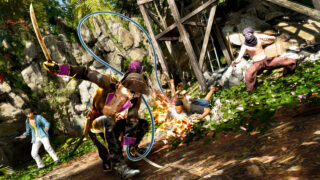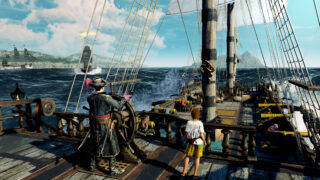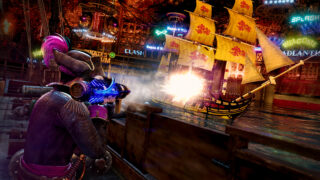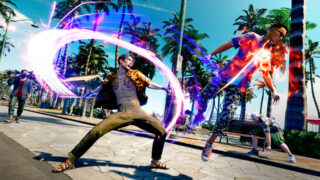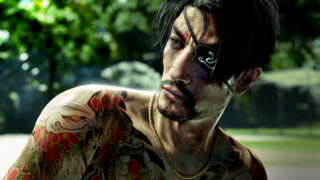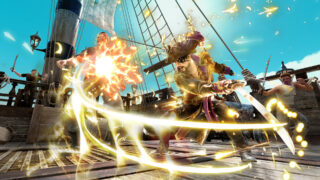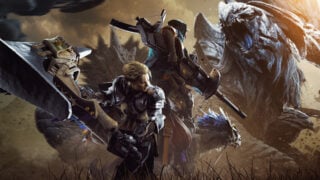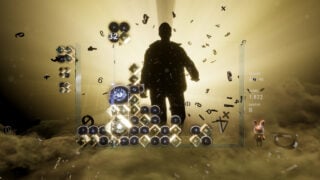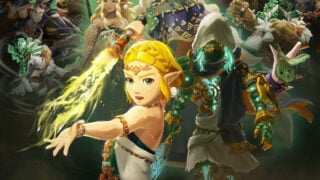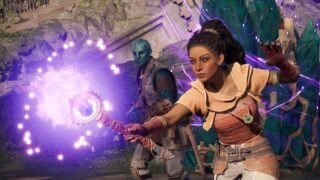Like a Dragon Pirate Yakuza in Hawaii review: A 15-hour inside joke that will just about keep you hooked
Goro Majima’s pirate adventure sets up Yakuza 9, and makes us wonder if we’ve maybe had a bit too much Like A Dragon
- Key Credits
- Yasuaki Uehara (Director), Daisuke Fukagawa (Event Scene Supervisor), Hiroyuki Sakamoto (Producer)
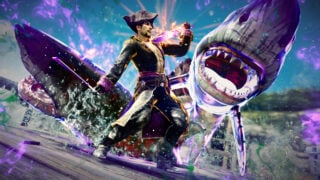
It’s barely been a year since we had Like A Dragon: Infinite Wealth, and now after playing Like A Dragon: Pirate Yakuza in Hawaii, I hope it’s a few more years before we get Yakuza 9.
That’s not to say that Like A Dragon: Pirate Yakuza in Hawaii is a bad game, or that I had a bad time with it. I just that I know I’d have gotten far more out of it were I given more breathing room before exploring the same locations, talking to the same characters, and even playing the same mini-games I did 12 months ago.
In this offering, ex-Yakuza and construction tycoon Goro Majima wakes up on a beach, 6 months after the events of Like a Dragon: Infinite Wealth. By assembling a band of pirates, sailing the seven seas and taking down a pirate syndicate, Majima must both recover his memories and find a rumored treasure.
Watch our Like a Dragon Pirate Yakuza in Hawaii review video:
The game takes place across Madlantis – a pirate colony that’s essentially Las Vegas-on-Sea – as well as some smaller islands that serve as story locations, and the full Hawaii map from Infinite Wealth. Pirate Yakuza’s brisk campaign is a serviceable Captain Hook ’em up, but regressive action and disappointingly undercooked pirate gameplay make it an experience that’ll be loved by hardcore fans, but can probably be skipped by fly-by-night Yakuza enjoyers.
A lot of your enjoyment of the game will derive from how invested you are in the Like a Dragon series so far, and how much of that specific brand of zany humour you can put up with. While, for me, the prospect of breaking up the action for several full-blown dance sequences is joyous, if this is a player’s introduction to the series, I can absolutely see the whole thing feeling like a 15-hour inside joke.
The wackiness has always been a part of the Like A Dragon franchise, but it’s usually the salve to the extreme melodrama that holds the narrative together. When the narrative itself goes fully bizarre, there’s nothing to balance it out. It’s enjoyable and consistently funny, but you’ll struggle to remember the finer details when the credits roll. The bizarre side characters are usually the spoonful of sugar to help the medicine go down, Pirate Yakuza is like eating 50 Creme Eggs in an hour.
One of my main conflicts about the game is its inclusion of the Hawaii map from the previous Yakuza entry. On the one hand, it’s a great environment to explore and makes use of plenty of the characters from Infinite Wealth for callbacks, references, and easter eggs. On the other, it feels very clearly included in the game to pad out its length, especially given how small the other areas of the game are.
The only caveat to this is that the Like A Dragon series is famous for reusing locations across multiple games, not only as a means of storytelling but to speed up development. Perhaps the return to Hawaii just feels too soon because of the nearly 100 hours one was likely to spend there during 2024’s Like a Dragon: Infinite Wealth.
The previously mentioned Madlantis is moderately sized, if small for a Like A Dragon map, and the other two areas are largely small stop gaps for story cutscenes to take place. There are islands dotted around each of the regions, but these are very limited combat arenas that all take on largely the same visual language and have very little variety.
“The wackiness has always been a part of the Like A Dragon franchise, but it’s usually the salve to the extreme melodrama that holds the narrative together. When the narrative itself goes fully bizarre, there’s nothing to balance it out.”
That’s Pirate Yakuza’s problem in a nutshell: by returning to the action combat style rather than the RPG style that the main game has adopted, virtually all depth has been lost. You’re using the exact same moves over and over again, fighting largely the same enemy styles, and it quickly becomes tiresome. Every gameplay moment funnels towards hack-and-slash battles against hordes of enemies, even the game’s naval combat.
The pirate part of Pirate Yakuza in Hawaii is rather basic. While the ship-to-ship combat is fine, it’s less advanced than that of 2014’s Assassin’s Creed: Black Flag. Enemy ship AI is braindead, and every single encounter plays out exactly the same, with the only real difference being the amount of health other ships have.
When you’ve damaged the enemy ship enough, it’s time to leap aboard and do another hack-and-slash arena fight. This time you’re joined by your crew mates, who you can recruit from across the game world. These can be found as rewards for side stories, or similar small tasks. These characters don’t serve much story purpose after they are recruited, but it is always funny when you’re launching onto another ship to see salary men, robots and former Yakuza protagonists running into battle by your side.

Outside of combat, the ship exploration is dull in a very non-Ryu Ga Gotoku Studio way. There are the aforementioned smaller islands to explore, but so much of your time is spent going from Madlantis to Hawaii and back again that the time spent in the ship feels laborious. The game seems to acknowledge this by how liberally it allows you to fast travel. What side quests do exist at sea are just battles against slightly tougher ships, but even these can be dispatched without much thought.
Listening to Goro Majima read a phone book would be entertaining, at least for a little while. As such, Pirate Yakuza in Hawaii is a good time, which is occasionally elevated to a great time if you’re a big fan of the series. For those who’ve yet to be convinced, or perhaps those who jumped on board when the series moved to its new RPG style, this may be a stumble.
I put up with the shallow combat and flagrant overuse of a location I just spent 100 hours in because I love this series and these characters. I will play anything RGG makes, but even I can see that this feels like Like A Dragon saturation.
When the series was still called Yakuza and the games took around 30 hours to beat, I could get on board with a new entry every year or two, but since 2020 we’ve had two 100-plus hour RPGs, Like A Dragon: Ishin, The Man Who Erased His Name and now Pirate Yakuza in Hawaii. It’s a lot. Pirate Yakuza itself even serves as a lead-in for the next mainline game, so it’s not like RGG has any plans to slow down.
Unless you’re a Like A Dragon completionist, you can probably skip Pirate Yakuza in Hawaii for now. The characters remain wonderful, even if the new gameplay itself isn’t. Hawaii is the best location in series history behind Kamurochō, but you’ve probably just spent a hell of a lot of time there already.
Like a Dragon: Pirate Yakuza in Hawaii Review
Like a Dragon: Pirate Yakuza in Hawaii is an amusing, if underwhelming way to kill time before Yakuza 9, but considering the speed at which RGG is releasing new games in the series, you probably don't have to wait that long for the next traditional entry.
- Goro Majima.
- Extremely funny, if sometimes grating.
- Hawaii remains an excellent location.
- Madlantis.
- Pirate gameplay falls flat.
- Narrative is predictable.
- Very few new areas to explore.
